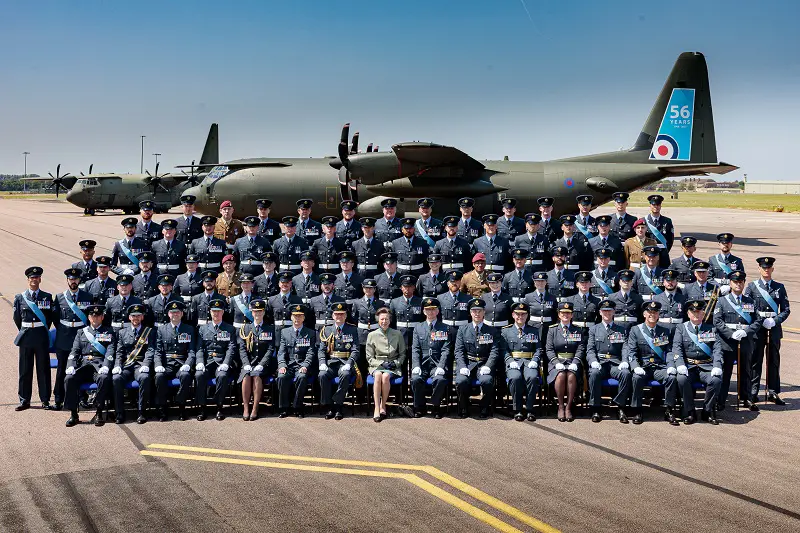The Her Royal Highness, The Princess Royal, attended the stand down parade of Number 47 Squadron and the retirement of the C-130 Hercules transport aircraft. The Princess Royal, who is Honorary Air Commodore to RAF Brize Norton, reviewed members of the Squadron on parade in front of invited guests, to mark their proud history. The parade marched to the music of The Central Band of the Royal Air Force with a background of two static C-130 Hercules aircraft. The event, attended by past and present members of the Squadron were able to witness the Hercules carry out one of its last spectacular flypasts. The Hercules will retire from RAF service on 30 June, and concurrently No.47 Squadron will be stood down and its Standard laid up for a period at College Hall Officers’ Mess, RAF College Cranwell, until reformed.
Number 47 Squadron, Royal Flying Corps, was formed in Beverley, Yorkshire on 1 March 1916. The Squadron was initially designated for home defence, but was not issued with any aircraft until 13 April, when four Royal Aircraft Factory BE2Cs were transferred from 15 Reserve Squadron. During its 107-year history, the Squadron has operated across the globe and has been equipped with a number of different aircraft; in 1968 it became a C-130 Hercules Squadron, based at RAF Fairford, then moving shortly thereafter to RAF Lyneham. In 2011 No. 47 Squadron moved from RAF Lyneham to RAF Brize Norton, where it has continued to provide highly trained crews and support staff to support the MOD and by extension the United Kingdom’s requirements in the global theatre. The C-130 fleet has been an integral part of air power for the RAF for nearly six decades, contributing to nearly every British conflict since it was brought into service in the 1960’s.

“It is a great honour to command 47 Squadron at this historic moment. I am extremely proud of the people on my Squadron and across the wider Hercules family – they have delivered time and again on operations. I wish to pay tribute to them, and their families, for their exceptional contribution to UK Defence during my tour and over nearly 57 years of Hercules operational service. Whilst the retirement of the Hercules and the laying-up of the 47 Squadron standard is a sad moment for many of us, I have full confidence that the people of the RAF Air Mobility Force will continue to deliver excellence around the globe,” Wing Commander James Sjoberg, Officer Commanding Number 47 Squadron said.
The transport aircraft has played an essential role as part of the air mobility fleet, supporting UK military and humanitarian relief operations, as demonstrated during Operation PITTING, the evacuation of entitled personnel from Afghanistan. More recently in Sudan, having left nearly 82 years ago, 47 Squadron returned to Khartoum with three Hercules in April and May 2023, where apart from RAF Lyneham, 47 Squadron has called home the longest. Unable to access Khartoum airport (established by 47 Squadron in 1927) Hercules evacuated over 2000 Embassy staff and British passport holders from a degrading concrete strip North of the city. The expertise acquired operating the Hercules and its broad range of capabilities is transitioning across to the 22-strong Atlas (A400) fleet and other flying platforms in RAF service, thereby ensuring the Hercules’ legacy forged over the past 56 years will continue in future.















